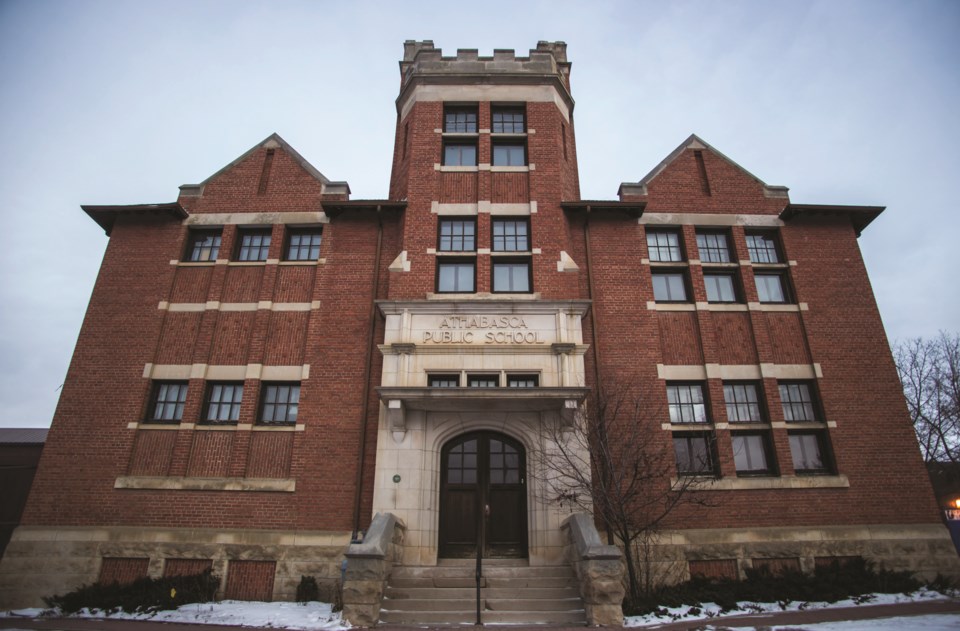ATHABASCA — After 64 years of throwing, firing, and painting locally harvested clay shaped into ornaments, earrings, bee baths and more in the basement of the Old Brick School, the Athabasca Pottery Club is ready to make much-needed repairs and upgrades to the studio space, and finally has the cash on hand to get started.
The club is soon to be $125,000 richer, thanks to the recent approval of their Community Facility Enhancement Program (CFEP) by the provincial Ministry of Arts, Culture, and Status of Women. The CFEP grant, plus matching funds from the Town's Old Brick School reserve, will soon be redirected towards the first stages of a revitalization project for the historic building pegged at over $3.2 million dollars.
“We’re excited to be able to move forward in partnership with the town, and we are very grateful to the province and town for their support,” said Nancy Parker, president of the pottery club.
Parker said the new funds will be used for necessary repairs to the foundation of the Old Brick School including the structural supports, as well as plumbing upgrades, relocating the bathrooms, removing partitions for more floor space and improving accessibility for all Athabascans.
“I know, really sexy stuff that we need,” said Parker. “Some of this work is done so that the work in the next stories up can be done.”
“Then we can move forward with other pieces in a staged approach to getting the whole building turned into an Arts and Cultural Centre.”
The club has been waiting for word on the CFEP application since July 2024, and past and present members been chomping at the bit to upgrade their workspace and the building as a whole for years, having applied for historical status to qualify for special funding in 2020.
Related: Pottery club working with town on Old Brick School rejuvenation
Related: New life for the Old Brick School
In addition to crossing the first of a long line of both necessary and wish list repairs and upgrades off the 165-page report on the building, Parker said the grant and planned work will allow the pottery club to better meet the demands of creatives in the area.
“Looking to improve the space will let us expand our programming options,” she added. “We will be opening up more options and hopefully having more classes for different groups like children, youth, and seniors so they can explore what it means to work with our locally-sourced clay.”
With room for a maximum of 18 potters in the current space and annual class sizes limited to 10 for required preliminary training, Parker said the waiting list to join the club is growing year over year.
“Last year we had twice the number of applicants as we had spaces for in our classes,” said Parker, who said she’s also had to turn down inquiries from school groups due to safety concerns in the tight space.
The club, in conjunction with the Old Brick School committee, will spend the next few months getting their permits and requests for contractor bids prepared in order to start work this summer.
Members are getting ready to vacate the space following the May 3 Spring Sale, and Parker said she hopes to be back to business by autumn 2025, though contractor schedules and other delays could impact the timeline.
“It’s a landmark building, and after having lost a landmark building last summer, it’s really nice to think that we’re going to go forward and preserve this one.”



